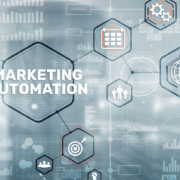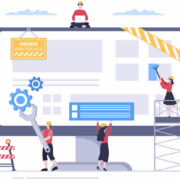How to Market Senior Living Communities: 4 Overlooked Places
We can discuss how to market senior living communities . . . or we can discuss how to EFFECTIVELY market senior living communities via four places our industry tends to overlook or treat as an afterthought:
- Google My Business
- Hyper-local online publications
- Social media advertising
- Traditional advertising (radio and print)
How to market senior living communities: Think Google My Business.
Why does maintaining a robust Google My Business (GMB) listing matter? Three reasons. First, the majority of searches happen on Google (its market share is over 92 percent). Second, Google is always quick to serve up relevant and well-maintained Google business listings in its results. And last but not least, a strong Google My Business presence is critical to local search.
Consider your Google My Business listing an off-shoot of your main website. Just as you update your website, you need to update your GMB listing.
What to focus on:
- Complete all info, particularly the About section. Make it compelling!
- Monitor and respond to reviews. Thank people for giving positive reviews. For negative reviews, tread carefully and respond mindfully. Avoid sounding defensive or dismissive. Don’t make every response (to either positive or negative reviews) sound the same. For negative reviews, invite the person to contact someone on your end to discuss things further—but make it a REAL offer. Provide a real name and real phone number—and make sure the person is on top of fielding these calls.
- Regularly add new photos. Swap out older ones. Add in fresh views, new scenes, amenity shots, etc.
- Audit the page every quarter (at least). Get in the habit of buzzing through your listing to make sure everything is current. For example, right now, you might have verbiage around COVID-19 protocols, like face masks. At some point, that info will no longer be necessary. (We hope, anyway.)
Note: If you work with us, your Google My Business Listing will be one of the first things we audit and spruce up on your behalf.
How to market senior living communities: Think hyper-local online publications.
Running ads on local online publications, like your region’s local Patch.com or Nextdoor.com, is an excellent way to build brand awareness and name recognition. Plus, you can easily measure traffic that comes to your site via these ad channels.
- Patch.com, which has over 1,200 hyper-local sites across all 50 U.S. states and Washington D.C., offers a self-serve ad platform that lets advertisers get super granular with their targeting. Whether you operate a national chain of senior living communities or only a handful in one state or region, you can run ad campaigns on the Patch site that makes the most sense for each community.
- Nextdoor.com offers advertising options designed specifically for local businesses as well as an option for regional and national companies. The former allows you to target people within 30 miles of your location, while the latter allows you to reach prospects across multiple markets, making it ideal for senior living communities that operate properties across multiple states.
By the way, these aren’t the only players on the hyper-local scene. Your town or city might have its own online publications.
Of course, with any advertising, you must have compelling creative assets in terms of both the message and the design. Don’t skimp just because you’re running online ads. (Need help? We have a library of compelling digital ads that are ready to go—you simply customize with your information. Get in touch if you’d like to learn more.)
How to market senior living communities: Think social media advertising.
It’s not so much that the senior living industry “overlooks” social media as an effective place to run ads. Instead, we suspect most communities are a bit skittish about trying to launch social media advertising in general. Or maybe they’ve tried it briefly and “failed” because of problematic execution or a lack of reasonable expectations.
But social media advertising can be an incredibly effective and budget-friendly way to reach your target market, provided everything is set up correctly. (We can help with that, too!)
Like the advertising programs offered by the hyper-local online pubs, social media platforms like Facebook and Instagram offer similar levels of control over your targeting.
For example, with Facebook ads, you can target attributes like age, gender, behaviors, and locations. Facebook owns Instagram (with similar options for targeting). The nice thing about Instagram ads is how visual they are—they can truly help capture and tell the story behind your community.
Like anything else, however, you need an overarching strategy to guide your social media advertising. You need to think through the messaging, the design, and what you ultimately want people to do. You need the ability to measure and monitor results as well. And you need to invest enough dollars to get the results and ROI that would make it worth your while.
Note: This can be challenging for smaller in-house senior living marketing teams to manage on their own. That’s why working with an outside agency like ours can be an excellent way to make sure your campaigns are poised for maximum success.
How to market senior living communities: Think radio and print.
OK, we know this suggestion probably sounds odd after the other tips about online marketing channels. And the truth is, we don’t know if this suggestion will still be one we make a decade from now. (Time will tell.)
But for now anyway, at least some of your demographic, especially those in the Silent Generation, still listen to the radio and read daily newspapers. So running campaigns (often in tandem!) on these channels can be a smart strategy to consider, provided you do them right.
Speaking of doing things right, check out our guide to senior living advertising on the radio. It goes into the nitty-gritty of pricing and how to create winning copy. We also discuss the pros and cons of print advertising in this article about print vs digital ads.
Bonus tip about how to market senior living communities: ALWAYS think strategy first.
You can’t expect your marketing or advertising to work over the long haul without a sound strategy. And sometimes the most important thing you need when it comes to strategy is an objective opinion. That’s where we come in. Let’s discuss your senior living marketing strategy for 2022—get 30 minutes on us!











